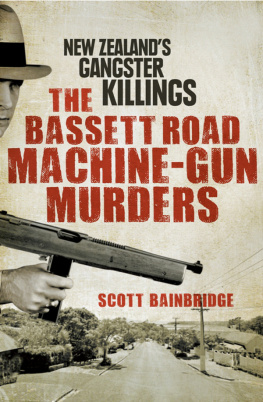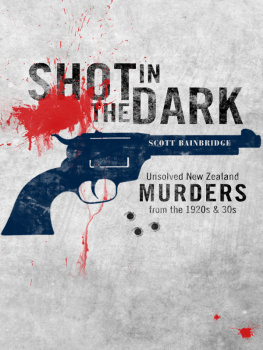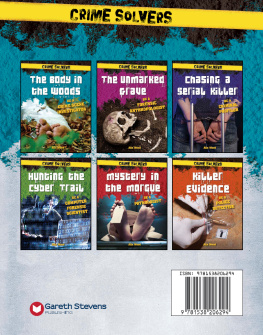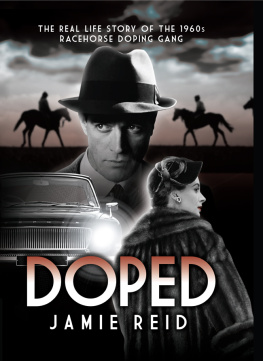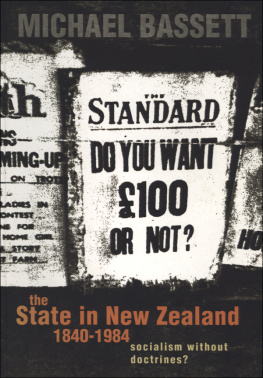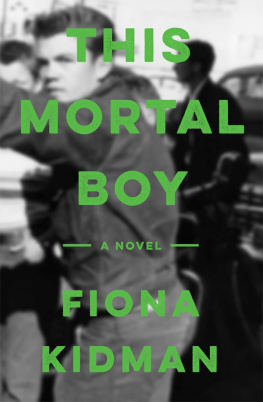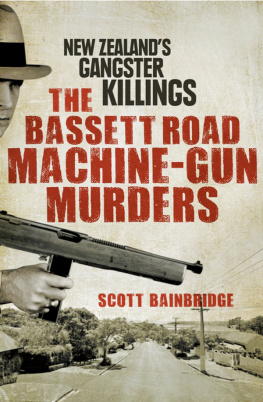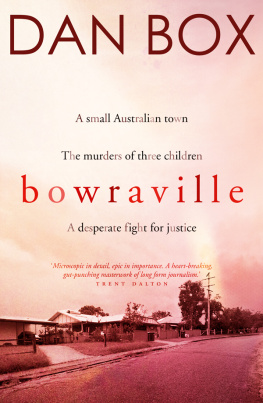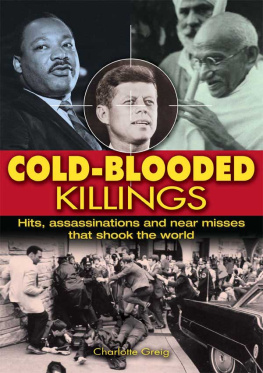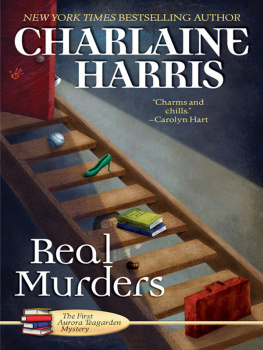
THE
BASSETT ROAD
MACHINE-GUN
MURDERS

SCOTT BAINBRIDGE

First published in 2013
Copyright Scott Bainbridge 2013
All rights reserved. No part of this book may be reproduced or transmitted in any form or by any means, electronic or mechanical, including photocopying, recording or by any information storage and retrieval system, without prior permission in writing from the publisher.
Allen & Unwin
Level 3, 228 Queen Street
Auckland 1010, New Zealand
Phone: (64 9) 377 3800
83 Alexander Street
Crows Nest NSW 2065, Australia
Phone: (61 2) 8425 0100
Email: info@allenandunwin.com
Web: www.allenandunwin.com
A catalogue record for this book is available
from the National Library of New Zealand
ISBN 978 1 877505 28 7
eISBN 978 1 743433 35 5
Internal design by Design by Committee
courtesy of Sir George Grey Special Collections,
Auckland Libraries (NZ Map 6409)
Set in 12/16.5 pt Bembo by Post Pre-press Group, Australia
For Raea and Rafael
CONTENTS
PART I
GANGLAND MURDERS IN REMUERA
PART II
THE TRIAL AND ITS AFTERMATH
At about 9am on Saturday, 7 December 1963, Eric Lewis went to 115 Bassett Road in Remuera, Auckland, to collect rent from his new tenants. He had arranged to collect the money the previous evening, but when he called nobody was home.
Opening the front gate, Lewis noticed the newspaper container had been knocked off its ledge and it contained the New ZealandHerald for Thursday 5 December. Friday and Saturdays papers were in the letterbox. Fearing the tenants had absconded, Lewis let himself inside with his master key. The place reeked.
He opened the door to the front bedroom and found two men, obviously deadone was lying on his back on the bed and the other was face down on the floor beside the bed. Both bodies were covered with bedclothes, and there were bloodstains on the sheets covering the man on the bed.
Overwhelmed by the sight of two dead men and the stench, Lewis beat a hasty retreat and contacted police.
As a boy growing up in Te Awamutu in the 1970s, I had a morbid fascination with crime. On Sunday mornings, my job was to hop on my Cruiser and cycle 6 kilometres to the IGA where I bought the Sunday News and 8 OClock for the old man. Once home, I devoured both papers, hungry for every snippet of crime news. At the time, the papers were full of updates on the Thomas case, Mona Blades, Tracey Patient and, as the decade closed, Mr Asia.
I had not heard of the Bassett Road machine-gun murders until 1985, when Ron Jorgensens sinister disappearance was covered in a Sunday News weekly serial by foremost investigative journalist Pat Booth. On our next family trip to Auckland, I remember wandering along Karangahape Road trying to imagine what it was like back in the daybig gangsters wearing heavy overcoats, fancy Italian suits and trilby hats menacingly walking past George Courts department store and the remaining, mostly sleazy, shops.
It is 28 years since that visit and K Road, as it is popularly called, is more Bohemian and multicultural than it used to be but, for some reason, when I walk along it, I always think of those men. They were New Zealands first real gangsters.
In 2005, my first book, Without Trace, covering unsolved cases of missing persons, was published. I included the mysterious disappearance of one of New Zealands well-known criminals, Ronald Jorgensen. That book and its sequel, Still Missing, were developed into the television series The Missing, produced by Screentime.
In 2010, during the second season, acclaimed director Tom Reilly and I delved into the events surrounding Jorgensens baffling disappearance from Kaikoura in 1984 after his car was found abandoned and smashed at the bottom of a cliff. Researching Jorgys background, I discovered an interesting and complex character and the resulting episode of The Missing debunked some myths and even resolved some of the unanswered questions. However, we never did find out, once and for all, what happened to Ronald Jorgensen. Part of me believes he gave us the slip.
During my research, I learned more about the Bassett Road machine-gun murders, an incident which catapulted onto the front pages of major newspapers in December 1963 and, later, into the history books, making Jorgensen a household name for the rest of his life. The discovery of the bodies of Kevin Speight and George Walker revealed for the first time the seedy and violent underbelly of Auckland crime and vice to a nave and conservative New Zealand public. The subsequent police investigation took 24 days of hard 18-hour-day graft by 32 of New Zealands finest detectives, and an equally large number of uniformed police.
The investigation, the highly controversial trial and its aftermath splashed across the tabloids on a daily basis. Newspaper circulation was at an all-time high during the early days of television in New Zealandless than half of the population owned a television.
The police case rested on the theory the murders were part of a gangland retaliation or turf war, as reported by the media. However, this is a piece of fiction and the true story is every bit as gripping. It needs to be told. When I found myself reading scant Herald articles announcing the deaths of men like Bert Clapham, Bryce Peterson and Leon Lucky Whitegangsters of the early 1960s and associates of both victims and the accusedI knew I needed to get on to it while some of the people involved were still alive.
Detectives Bob Walton, John Hughes and John Stevenson and the Honorable Sir Graham Speight all played pivotal roles in solving the case and bringing about the downfall of Aucklands organised criminal underworldthey, too, have recently passed away. After reading their obituaries, I felt it vital to tell this story from a firsthand point of view before it was too late.
GANGLAND MURDERS
IN REMUERA
The headline is what people remember most: CHICAGO COMES TO AUCKLAND was sensationally blazed across the front page of Truth on 10 December 1963, after the gruesome discovery of two dead underworld figures in a house in the upmarket Auckland suburb of Remuera. In a quiet street of family homes, residents were shocked to learn 115 Bassett Road had been operating as a sly-grog den or beerhouse. The victims had been executed in a hail of bullets fired from a machine gun, the type of weapon favoured by Al Capone and other gangsters in the United States (US) during the years of Prohibition. Before then, authorities had no idea there were such guns in New Zealand.
These were innocent times. People were still reeling over the assassination of John F. Kennedy, the President of the United States, on 22 November 1963, just three weeks earlier. Although JFKs assassination did not have too much of an impact on the daily lives of the average Kiwi, it changed the way they viewed the world.
Murders were rare in New Zealandthere were on average eight murders per year and abolishing the death penalty two years earlier had not increased the murder rate, as some people had predictedmore would have been considered a crime wave.
The disappearance of Wellington model Wendy Mayes in 1961 and the parcel bomb death of solicitor James Ward in Dunedin in 1962 had a high profile and received a great deal of media coverage. Many people believed the latest murders were a problem confined to Auckland, which was experiencing rapid urban growth, with
Next page
